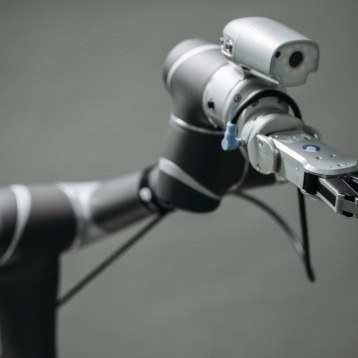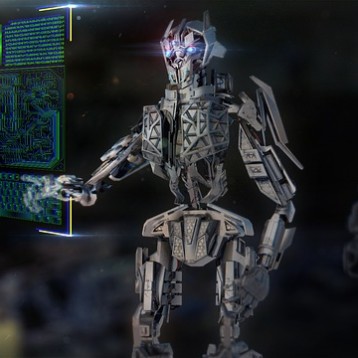Rhodri Armour, a Ph. D. student at the University of Bath, has created a new robot capable of both rolling and jumping, which allows for greater mobility over the widest variety of terrain types. Inspired by the way grasshoppers store kinetic energy then release it all at once to quickly achieve high jumps, the new spherical Jollbot robot can roll in any direction or jump as high as half a meter off the ground to avoid obstacles in its path.
Armour and several colleagues at the Centre for Biomimetic and Natural Technologies at the University of Bath have been looking at the way insects efficiently store energy and jump out of the way of obstacles. Armour designed the Jollbot to illustrate these principles.
The robot is a small, flexible spherical cage weighing less than a kilogram. The frame slowly stores energy from electric motors between jumps. Just before jumping, the robot squashes itself, then releases all of its stored energy as it springs upward to reach a height of around half a meter off the ground.
Due to the flexible frame and light weight of the Jollbot, it can usually land after jumping without any damage. This is a major advantage over more conventional jumping robots which often land awkwardly resulting in breakage and other damage. The spherical shape also protects the robot as it rolls along the ground, preventing it from getting stuck in pot holes or from overturning. By bypassing legs entirely, the rolling robot avoids much of the navigational and control complexity inherent in walking robots and the damage such devices take during frequent falls.
While the current model of the Jollbot robot uses electric motors as its power source, future versions could incorporate a layer of solar cells acting as a skin around the exterior of the sphere, allowing the robot to power itself directly from the gathered sunlight. Various sensors may also be added in the future, allowing the robot to exert more control over its own path or gather data about its surroundings.
One proposed use for the Jollbot is space exploration. Its ability to adjust to varying terrain makes it ideal for exploring the surface of the moon or solid asteroids and planets. Part of Armour’s recently completed dissertation focuses on how the Jollbot might react in low-gravity situations such as those found in space environments.
TFOT has reported on a variety of other biomimetic robots including another jumping robot modeled after the grasshopper, the GhostSwimmer swimming robot based on the bluefin tuna, a miniature spy plane inspired by bats, an amphibious swimming and crawling robot based on a snake, and a climbing robot also modeled after a snake, capable of crawling over high stairs and other obstacles.










